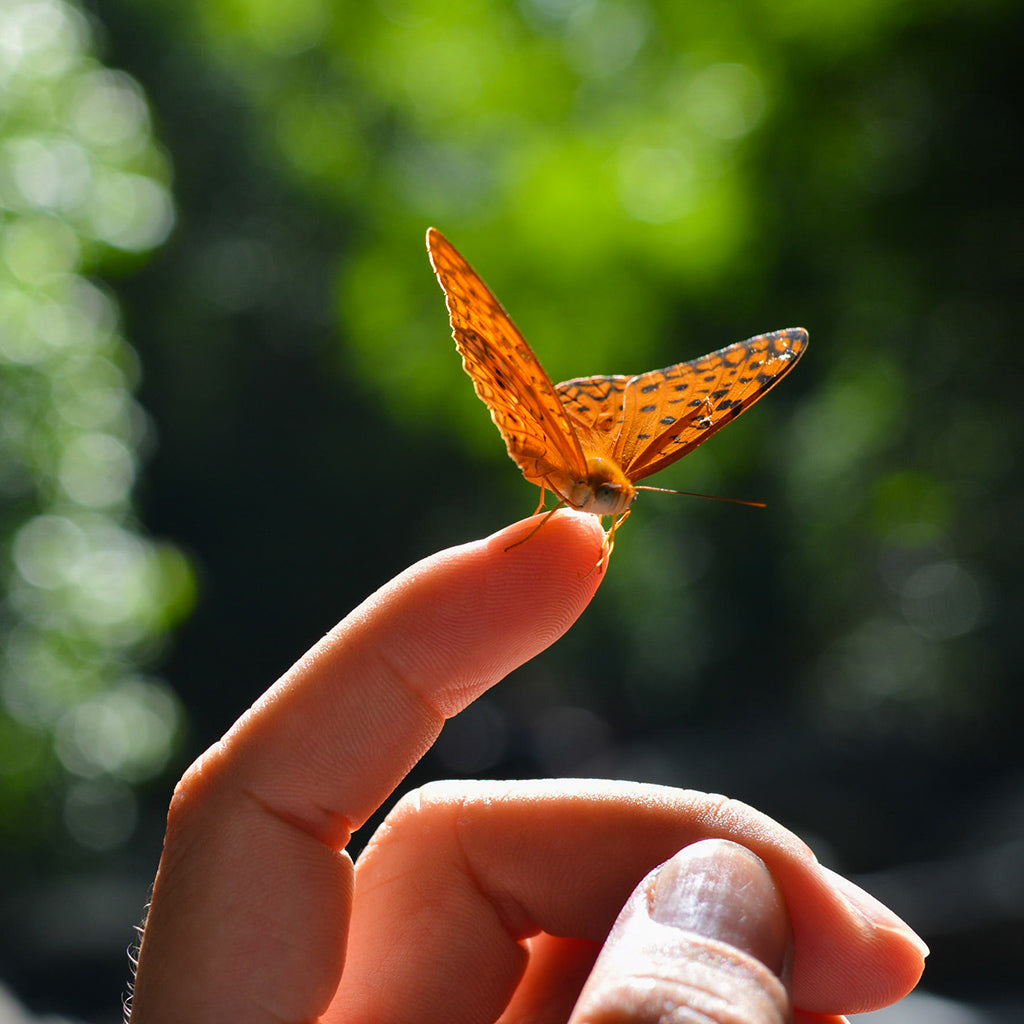0115 684 8754

How to create a wildlife friendly low-maintenance garden
The UK’s gardens cover a larger area than all of our National Nature Reserves combined, therefore it is important for us all to focus on creating a wildlife friendly garden in our backyard. With more and more people embracing the easy-life with artificial lawns or hard surfacing, it is understandable to presume that choosing artificial grass is driving out the wildlife from our gardens. But just because you have opted for an artificial lawn, it doesn’t mean you can’t be a welcoming host to nature. In fact, every space (from huge estates to rooftop gardens, with or without artificial grass) has the potential to be a nature friendly garden.
What does a wildlife friendly garden look like?
A wildlife friendly garden aims to support your local wildlife and invites wild animals to visit your garden. It’s all about the plants you grow and the layout of your garden which makes a big impact. To be a wildlife hostess with the mostess, you need to ensure easy access to and from your garden, know how to provide safe spaces for wildlife, and provide them food and water.

Can my garden be wildlife friendly with artificial grass?
Your garden can be wildlife-friendly with artificial grass! You might think that having an artificial lawn isn’t good for wildlife or the environment, but artificial grass actually has some really helpful benefits. Artificial lawns don’t require extra water in summer months, harmful fertilisers and weed killers or lawn mowers for maintenance.
If you’re a fan of the neatly cut lawn look, we advise artificial grass as the way forward. Real grass requires you to regularly mow your lawn, which means constantly removing insects’ playground in order to maintain your dream garden.
We’ve picked out our favourite wildlife friendly garden ideas which will work alongside artificial grass, as well as being relatively low maintenance - so you have more time to sit back and enjoy your garden and the wildlife in it.

1. Add Native Vegetation
Pros: provides food and a habitat for wildlife, aesthetically pleasing.
Cons: high maintenance, could trigger allergies, make sure plants are non-toxic for pets.
There are a lot of ways you can introduce pollinator friendly shrubs and wildlife friendly flowers to a garden with artificial grass. You can grow climber plants like Ivy which provides a food source and cover for birds and insects all year round. Or you can replicate a real grass lawn with borders and flower beds which provide worms and burrowing insects a sanctuary. Alternatively, you can add planters! Whichever way you choose to add your plants, the key is to research which type of plants will best suit your garden.
One of the best things you can do to make your garden wildlife friendly is to plant native plants, by choosing these over non-native species you are being a big help to our pollinating friends, as it is these plants our pollinators have evolved alongside with.
If you’re looking to attract a certain species to your garden, research what type of plants they like most. For example, bee-friendly wildflowers tend to be nectar-rich plants such as Hardy Salvia, Redbeckia, Lavender and Nepetas for a sweet treat!
If you want to see more fluttering butterflies grace your garden, think about planting a variety of plants that will flower at different times of the year, or a Buckthorn bush where they like to lay their eggs.

2. Care for local birds
Pros: low maintenance, great habitat and food source to birds, birdwatching.
Cons: none!
Unfortunately, 30% of birds in the UK are currently threatened with extinction, and extreme weather is only going to make that percentage rise. To make a bird friendly garden for your local birds, you can provide a bit of extra grub. The most useful time to put out food is when extreme weather occurs such as droughts or cold spells.
In winter birds benefit from high-energy foods with more fat, such as kitchen scraps. Whereas in spring and summer, when birds are feeding young, protein-rich feed such as fat balls are the best. You can make your own fat ball cakes with sunflower seeds and soaked raisins and sultanas.
If you’re a fellow bird watcher and want to attract a certain species of bird, it may require a bit more research. Take the time to find out what food they eat and make it available in your garden, for example sparrows eat mealworms, and goldfinches like nyjer seeds. You might want to invest in a pair of binoculars to see which birds visit!
Remember to avoid placing bird feeders directly above artificial grass as the food that falls will encourage rodents to dig at the lawn. Instead, place them in your surrounding trees or borders. If you tend to have a lot of squirrels, it might be worth getting a squirrel-proof feeder. Or if you feel crafty, you can even try making your own feeder out of a reused plastic bottle.
Another important thing to consider for a bird friendly yard is ensuring that there are enough safe spaces for them to eat and nest. Place nesting boxes and feeders high up in trees in sheltered areas, away from cats. Buy or make your own, or use hedges as a way to provide bird friendly shrubs as a place to nest.

3. Have a section of real grass or a wild meadow
Pros: low maintenance, great habitat and food source to wildlife.
Cons: could trigger allergies.
In some gardens, where space allows, it can be possible to have some real grass as well as artificial turf. The areas will need to be separated - the wild grass area can be specifically for attracting wildlife, whilst keeping the artificial grass as an area for yourself to relax in - the best of both worlds and there is little maintenance required!
Long grass is one of the rarest garden features, yet it requires no work and provides a variety of wildlife-friendly plants to be feasted on. You just need to resist the urge to remove weeds. Weeds flower for a long time so provide food for insects when other sources are absent. The longer grass also provides shelter under the stalks and is a great place for butterflies to lay their eggs. So strictly no lawn mowers or chemicals should be used here. Just ensure that the area you designate to wild grass has plenty of light and little footfall.
In addition, if you have artificial grass, let the surrounding overhanging trees grow! Sadly, real grass lawns require sunlight and water, which results in trees having to be cut back or down. But with artificial grass you don’t have to worry about that, let the trees be!

4. Add a bug hotel
Pros: low maintenance, good habitat for minibeasts, lots of fun for everyone.
Cons: none!
If you have a small garden, a really easy and super fun way to be wildlife friendly is to build your own bug hotel! You can get creative and involve the whole family, all you need to do is gather rocks, twigs and rotting all-sorts from your garden to create a home fit for minibeasts. If you get the right insects checking into your hotel, such as ladybirds and bees, they will repay your kindness by consuming the aphids that eat your plants - so it’s a win-win. Learn how to become a bug hotel architect here.

5. Leaf and log piles
Pros: low maintenance, a nice place to hibernate.
Cons: none!
Those shady, damp corners in your garden that are neither constantly sunny or always in the shade, can be the perfect wildlife habitat, for example: decay and logs, for amphibians and insects; woodpiles for butterflies and wasps during winter hibernation; damp or dead wood for amphibians, insects and small mammals such as Hedgehogs. Hedgehogs also can’t get enough of fallen autumn leaves to hibernate in winter. These damp areas tend to be homes to hibernators so avoid tidying them up in winter. Discover how to construct your own leaf and log pile here.

6. Throw uncooked food into a compost heap
Pros: low maintenance, environmentally friendly, good source of food and place to hibernate.
Cons: might attract rats if you add cooked food onto the pile.
A compost heap is a great way to cut down on landfill use, as well as providing a feast for wildlife. The best bit is that it's really simple to get started - you can buy pre-made wooden composter boxes or have a go at making your own. Then just gather a heap of vegetable peelings, old tea bags, coffee grounds and garden waste, and cover them to let them rot down to a lovely nutrient-rich mix.
Just make sure you always add uncooked waste to the pile, otherwise you will be inviting rats to join the dinner party too. Avoid using slug and snail pesticides as these are poisonous to lots of different animals.
And remember, much like a log pile, this creates a warm spot that animals will choose to hibernate in, so it’s best to avoid moving compost during the winter months.

7. Build a Hedgehog highway
Pros: makes your garden accessible to hedgehogs.
Cons: none (unless you don't like talking to your neighbours).
There is nothing more wholesome than building a hedgehog highway between neighbouring gardens. Hedgehogs can travel up to 1 mile a night, so to easily travel between gardens will help them along with their midnight adventures.
To create a hedgehog highway, talk to your neighbour and plan to clear a pathway, make a gap in the fence or swap your fence for a Hedge. As weather heats up, a hedge instead of a fence can also provide shelter for lots of creatures, especially birds.
Another way to help hedgehogs is by providing them a house or compost heap to nest and hibernate in. Hedgehog numbers have declined by 98% since the 1950’s so we need to help them now more than ever to get to where they need to be!

8. Provide a source of water
Pros: a great habitat, bath and source of water.
Cons: initially could be difficult to construct.
Ponds and bird baths are a great way to provide garden visitors a fresh drink or cleansing bath. A pond is the perfect playground for newts, frogs and insects, and because it attracts so many insects, it also attracts bats whose meal of choice are insects (You can also help bats by reducing artificial light from your garden).
In order to make sure that the pond is kept clean, consider adding native plants like Hornwort which will help oxygenate it and keep it and its inhabitants healthy. Fill ponds with unchlorinated rainwater from a water butt and add water lilies to prevent it from becoming stagnant.
A pond doesn’t have to be large, it can be created from a buried bucket. If a pond sounds like too much though, a bird bath is a good alternative. Bird baths are less overwhelming for animals that can’t swim in a pond. Bird baths should be refilled every so often to keep it fresh and topped up.
Whichever water source you choose, make sure that it isn’t located in full sun or full shade, and that it allows for easy access. This means ensuring your pond edges are shallow, or decorated with stones and branches, or choosing a bird bath with a sloping-sided dish filled with stones.

You don’t have to make all these changes at once to create a wildlife friendly garden, making small changes gradually goes a long way. And in no time you will feel like a Disney princess in your own garden, with birds chirping and frogs leaping around waiting to be kissed (but please don’t kiss them!).
Having artificial grass should in no way prevent you from having a wildlife friendly garden, so please give it a go and let us know what you do to make your garden more wildlife friendly!



